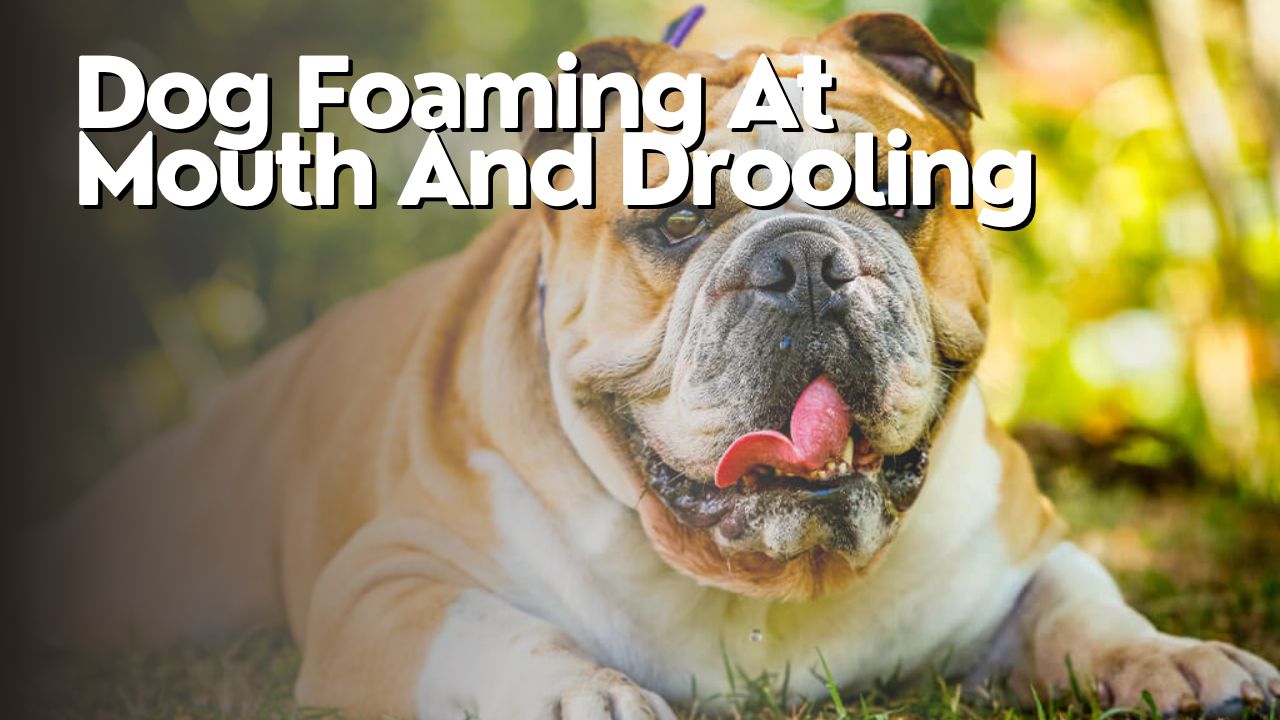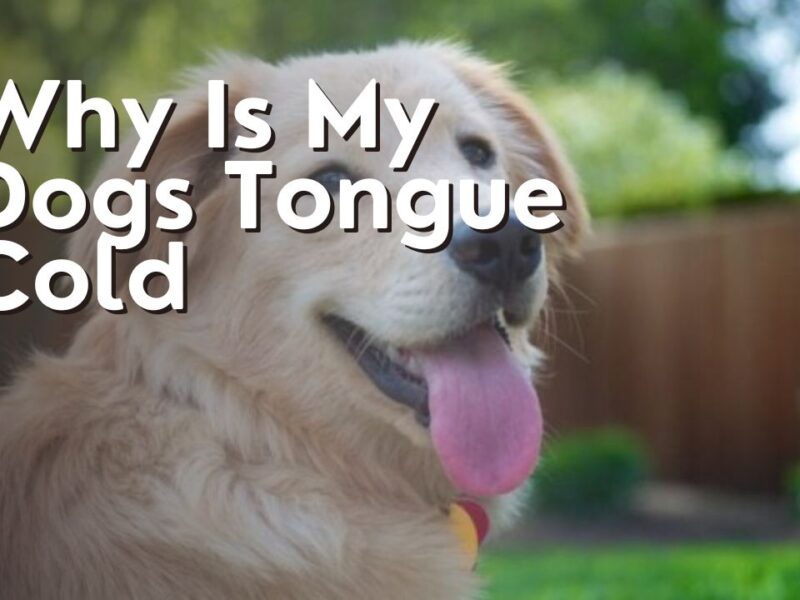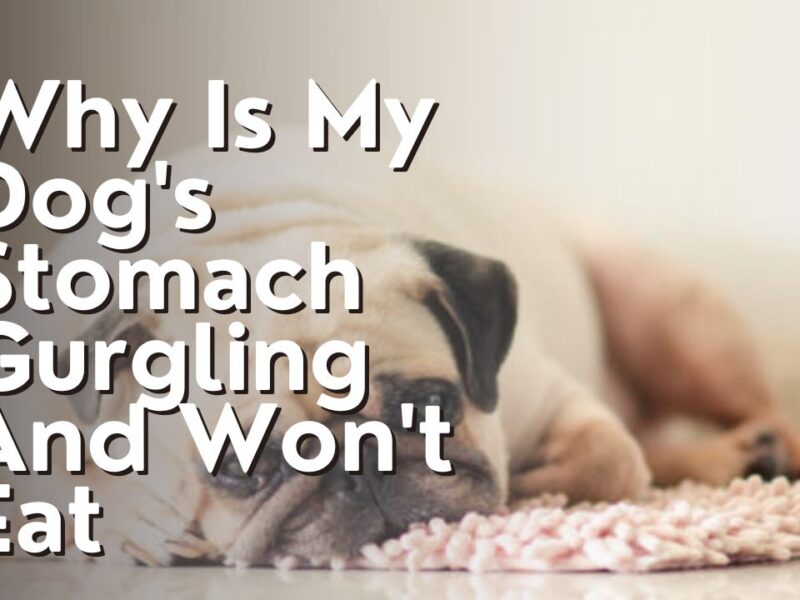In my experience as a dog owner, one alarming sight is when our furry friends start foaming at the mouth and drooling excessively.
It’s important to understand the common causes behind this concerning behavior to ensure our dogs’ well-being.
From dental issues and oral health problems to poisoning, allergies, infections, and even neurological disorders, there are various factors that can contribute to this symptom.
In this article, we’ll explore these causes and discuss when it’s necessary to seek veterinary care for our beloved pets.
- Common Causes of Foaming at the Mouth and Drooling in Dogs
- Dental Issues and Oral Health
- Poisoning and Toxic Substances
- Allergies and Irritants
- Infectious Diseases and Viral Infections
- Heatstroke and Overheating
- Anxiety and Nervousness
- Seizures and Neurological Disorders
- Respiratory Problems and Difficulty Breathing
- When to Seek Veterinary Care
- Frequently Asked Questions
- Conclusion
Common Causes of Foaming at the Mouth and Drooling in Dogs
There are several common causes of foaming at the mouth and drooling in dogs. One potential cause is rabies, a viral infection that affects the nervous system. Rabies can cause excessive salivation and foaming at the mouth in dogs. It is important to note that rabies is a highly contagious disease and can be transmitted to humans, so immediate veterinary attention is crucial if you suspect your dog may have been exposed.
Another possible cause is dental issues such as gum disease or tooth abscesses. Dogs with dental problems may experience pain and discomfort, leading to excessive drooling and foaming at the mouth. Regular dental care and cleanings can help prevent these issues.
Furthermore, ingestion of toxic substances can also result in drooling and foaming at the mouth. Certain plants, chemicals, and medications can be toxic to dogs and cause these symptoms. It is essential to keep harmful substances out of your dog’s reach to prevent accidental ingestion.
Lastly, heatstroke can cause excessive drooling and foaming at the mouth in dogs. When dogs are exposed to high temperatures, their bodies may not be able to cool down properly, leading to overheating and potentially life-threatening symptoms.
If you notice your dog foaming at the mouth and drooling excessively, it is crucial to consult with your veterinarian to determine the underlying cause and provide appropriate treatment.

Dental Issues and Oral Health
To maintain good oral health, it’s important for dogs to receive regular dental care and check-ups. Just like humans, dogs can suffer from various dental issues that can cause foaming at the mouth and drooling. Poor oral hygiene can lead to plaque and tartar buildup, gum disease, tooth decay, and oral infections. These conditions can be painful and uncomfortable for dogs, causing them to drool excessively and foam at the mouth.
Regular dental check-ups and cleanings by a veterinarian are essential to prevent and treat dental issues in dogs. During these check-ups, the vet will examine your dog’s teeth and gums, remove any plaque or tartar, and address any underlying dental problems. In addition to professional care, it’s important to establish a dental care routine at home, which may include brushing your dog’s teeth, providing dental chews or toys, and using dental rinses or wipes.
To emphasize the importance of dental care for dogs, let me share a table that highlights the potential consequences of neglecting oral health:
| Neglected Dental Care | Consequences |
|---|---|
| Plaque and Tartar Buildup | Bad breath, tooth decay |
| Gum Disease | Gingivitis, periodontal disease |
| Tooth Infections | Pain, tooth loss |
| Oral Infections | Systemic health issues |
Taking care of your dog’s oral health is not only important for their comfort and well-being but also for their overall health. Regular dental care can help prevent serious dental problems and ensure a happy, healthy dog.
Poisoning and Toxic Substances
Poisoning and toxic substances can pose a serious risk to a dog’s health and well-being. As a dog owner, it’s important to be aware of the potential dangers that certain substances can present to our furry friends. Dogs are naturally curious creatures and may ingest things that are harmful to them.
There are numerous substances that can be toxic to dogs. Some common examples include certain foods like chocolate, grapes, and onions, as well as household chemicals such as cleaning products, medications, and pesticides. Even seemingly harmless items like certain plants can be poisonous to dogs if ingested.
When a dog is exposed to a toxic substance, it can lead to a wide range of symptoms, including drooling, foaming at the mouth, vomiting, diarrhea, weakness, tremors, and seizures. If you suspect that your dog has ingested something toxic, it’s crucial to seek veterinary assistance immediately.
Treatment for poisoning and toxic substance ingestion will vary depending on the specific substance involved. In some cases, inducing vomiting may be necessary to remove the toxin from the dog’s system. Other times, supportive care such as intravenous fluids and medications may be required.
Prevention is key when it comes to protecting our dogs from poisoning. Keeping harmful substances out of their reach, properly storing medications and chemicals, and being cautious about what foods we share with them can go a long way in ensuring their safety.
Allergies and Irritants
Allergies and irritants can cause a range of symptoms in dogs, such as itching, sneezing, and skin irritation. These reactions can be triggered by various substances in the environment, including pollen, dust mites, mold, and certain chemicals.
Pollen: Just like humans, dogs can be allergic to pollen from grasses, trees, and flowers. This can cause them to sneeze, have watery eyes, and experience itchiness.
Dust mites: These microscopic creatures are found in household dust and can trigger allergic reactions in dogs. Symptoms may include coughing, wheezing, and excessive scratching.
Mold: Mold spores can be inhaled or come into contact with a dog’s skin, leading to allergies. Dogs may exhibit symptoms such as sneezing, nasal discharge, and irritated skin.
It’s important to identify and manage allergies and irritants that affect your dog to provide them with relief and prevent further complications. This can be done through environmental control measures, such as keeping your home clean and free of dust, regularly bathing your dog with hypoallergenic shampoo, and seeking veterinary advice for appropriate medication or immunotherapy options.
By addressing allergies and irritants, you can help your dog live a more comfortable and healthy life.
Infectious Diseases and Viral Infections
Keep your dog protected from infectious diseases and viral infections by ensuring they are up to date on vaccinations and avoiding contact with sick animals. It is important to understand that infectious diseases can be transmitted through direct contact with an infected animal, contaminated surfaces, or even through the air.
One common viral infection in dogs is canine parvovirus, which can cause severe gastrointestinal symptoms such as vomiting, diarrhea, and dehydration. Another viral infection is canine distemper, which affects the respiratory, gastrointestinal, and nervous systems, leading to symptoms like coughing, fever, and seizures. These viral infections can be highly contagious and can spread quickly among dogs, especially in places with a high dog population like parks and shelters.
To protect your furry friend, make sure they receive their regular vaccinations as recommended by your veterinarian. Additionally, avoid letting your dog come into contact with animals that show signs of illness, and practice good hygiene by regularly cleaning your dog’s living area and disinfecting their toys and bowls.
By taking these precautions, you can help keep your dog healthy and prevent the spread of infectious diseases.
Heatstroke and Overheating
Make sure you’re aware of the signs of heatstroke and overheating in your furry friend, such as excessive panting, weakness, and collapse. Heatstroke occurs when a dog’s body temperature rises to dangerous levels, often as a result of being in a hot environment for too long or intense exercise in high temperatures. This can be a life-threatening condition and requires immediate attention. When a dog is overheating, they may also exhibit other symptoms like excessive drooling, foaming at the mouth, and red gums. It’s important to act quickly if you suspect heatstroke in your dog. Move them to a cooler area, provide fresh water, and wet their coat with cool (not cold) water. You should also contact your veterinarian for further guidance. Remember, prevention is key. Avoid leaving your dog in hot cars or outside without shade and water. Take extra caution during hot summer days and provide plenty of opportunities for your furry friend to cool down.
| Signs of Heatstroke | Actions to Take |
|---|---|
| Excessive Panting | Move to a cooler area |
| Weakness | Provide fresh water |
| Collapse | Wet their coat with cool water |
Anxiety and Nervousness
If your furry friend seems anxious or nervous, there are several steps you can take to help them feel more at ease.
First, try to identify the source of their anxiety. It could be a loud noise, a new environment, or even separation anxiety. Once you understand the cause, you can take appropriate action.
One method is to create a safe and comfortable space for your dog. This can be a designated area in your home where they can retreat to when they feel overwhelmed. Make sure it is quiet, cozy, and stocked with their favorite toys and bedding.
Another helpful technique is to provide them with plenty of exercise and mental stimulation. A tired dog is often a calmer dog. Take them for regular walks, engage in playtime, and consider puzzle toys or treat-dispensing toys to keep their mind occupied.
If these methods don’t alleviate their anxiety, it may be beneficial to seek professional help. A veterinarian or a certified dog trainer can provide guidance and potentially recommend calming supplements or medications if necessary.
Remember, every dog is unique, and it may take some trial and error to find the best solution for your furry friend. Patience, understanding, and lots of love will go a long way in helping your dog feel more relaxed and comfortable.
Seizures and Neurological Disorders
When it comes to our furry companions, their health and well-being are always a top priority. In my previous discussion about anxiety and nervousness in dogs, I touched on the importance of recognizing and addressing these issues. However, sometimes the symptoms we observe in our dogs can be more concerning and may indicate something more serious.
Today, I want to delve into the topic of seizures and neurological disorders in dogs. It’s a distressing sight to witness our beloved pets experiencing seizures, with their bodies trembling uncontrollably and foaming at the mouth. These episodes can be terrifying for both the dog and their owner.
To help you better understand seizures and neurological disorders in dogs, let’s take a closer look at the following table:
| Seizures and Neurological Disorders | Common Symptoms |
|---|---|
| Epilepsy | Loss of consciousness, muscle twitching, drooling |
| Brain Tumors | Seizures, difficulty walking, changes in behavior |
| Encephalitis | Fever, confusion, head pressing |
| Stroke | Loss of balance, sudden weakness, difficulty swallowing |
| Canine Distemper | Fever, coughing, nasal discharge, seizures |
It’s crucial to consult a veterinarian if you notice any of these symptoms in your dog. Timely intervention and appropriate treatment can make a significant difference in their quality of life.
Respiratory Problems and Difficulty Breathing
Respiratory problems and difficulty breathing can be distressing for our furry companions. As a dog owner, it is important to recognize the signs and symptoms of respiratory issues to ensure prompt and appropriate medical attention. If your dog is foaming at the mouth and drooling excessively, it could be a sign of respiratory distress.
There are several potential causes for these symptoms. It could be due to an allergic reaction, such as a bee sting or ingesting a toxic substance. Infections, such as kennel cough or pneumonia, can also lead to respiratory problems. Additionally, certain breeds are more prone to respiratory issues, such as brachycephalic breeds with their shortened airways.
If your dog is experiencing difficulty breathing, it is crucial to seek veterinary care immediately. The vet will conduct a thorough examination to determine the underlying cause and provide appropriate treatment. This may involve medications to reduce inflammation, antibiotics to treat infections, or oxygen therapy to help your dog breathe more comfortably.
In conclusion, respiratory problems and difficulty breathing in dogs can be concerning. It is essential to recognize the signs and seek veterinary care promptly. By doing so, you can help ensure the well-being and comfort of your beloved furry friend.

When to Seek Veterinary Care
Recognizing the signs and seeking prompt veterinary care is crucial when your furry companion is experiencing difficulty breathing. As a responsible pet owner, it’s important to understand when it’s necessary to bring your dog to the veterinarian.
If your dog is drooling excessively, foaming at the mouth, and having trouble breathing, it’s a clear indication that immediate veterinary attention is required.
In some cases, respiratory problems can be life-threatening. Conditions like pneumonia, asthma, or even an obstruction in the airway can cause these symptoms. It’s essential to remember that dogs cannot communicate their discomfort verbally, so it’s up to us to pay close attention to their behavior and seek professional help when necessary.
Other signs that may accompany difficulty breathing include rapid or shallow breathing, wheezing or coughing, and a bluish tint to the gums or tongue. If your dog is exhibiting any of these symptoms, it’s crucial not to waste any time and contact your veterinarian right away. They will be able to assess your dog’s condition and provide the appropriate treatment.
Remember, never try to diagnose or treat your dog’s respiratory problems on your own. Only a trained professional can properly evaluate and treat these conditions. Seeking prompt veterinary care can make a significant difference in your dog’s health and well-being.
Frequently Asked Questions
Can a dog foam at the mouth and drool due to a dental issue?
Yes, a dog can foam at the mouth and drool due to a dental issue. It could be a sign of pain or infection in the mouth. It’s important to have a veterinarian examine the dog to determine the cause and provide appropriate treatment.
Are there any specific toxins or substances that can cause foaming at the mouth and drooling in dogs?
There are several toxins and substances that can cause foaming at the mouth and drooling in dogs. Some common ones include certain plants, household chemicals, insecticides, and certain medications.
Can allergies or irritants be a potential cause for a dog foaming at the mouth and drooling?
Allergies or irritants can potentially cause a dog to foam at the mouth and drool. It’s important to identify and remove the allergen or irritant to alleviate the symptoms and provide relief for the dog.
Are there any infectious diseases or viral infections that can lead to a dog foaming at the mouth and drooling?
Yes, there are infectious diseases and viral infections that can cause a dog to foam at the mouth and drool. It’s important to consult a veterinarian to determine the specific cause and appropriate treatment.
Is it possible for a dog to foam at the mouth and drool excessively due to anxiety or nervousness?
Yes, it is possible for a dog to foam at the mouth and drool excessively due to anxiety or nervousness. It’s important to address the underlying cause of the dog’s anxiety and provide appropriate support and treatment.
Conclusion
In conclusion, if your dog is foaming at the mouth and drooling excessively, it’s important to identify the underlying cause and seek veterinary care if necessary.
Dental issues, poisoning, allergies, and infectious diseases are just a few potential culprits. It’s essential to prioritize your dog’s oral health and address any respiratory problems or neurological disorders they may have.
Remember, your furry friend’s well-being should always be the top priority, so don’t hesitate to reach out to a veterinarian for help.


